#earlymodern
Text
LJS 28 is a portolan atlas - that is, maps concerned with coastlines and ports. Made in Venice between 1535 and 1538, it includes maps of Britain, the Mediterranean, the Aegean sea, Adriatic Sea, and others, and a map of the world (part 2 of 2)
Online: https://bit.ly/3THQfpQ
#manuscript#earlymodern#map#portolan atlas#venice#britain#mediterranean sea#aegean sea#adriatic sea#book history#rare books
1K notes
·
View notes
Text
Hi
Hello,
I thought I'd do a little introduction about myself and the purpose of this blog. My name is Claudia and I have studied history at university. I'm starting this blog so I can publish researched articles on different, lesser known figures in history, from various eras. These will be approached from different angles, with a focus on social history and microhistory!
I'd love to research people from a variety of countries, backgrounds, time periods, generally those who've up to now been given less space in history books, and so if you have any suggestions of people that you might want to know more about, let me know in messages and I will add them to my list of article ideas. For example, Bessie Blount, Henry VIII's mistress!
Although I won't be posting directly about them, I also write historical fiction and love historical dramas; Medici Masters of Florence (Daniel Sharman?), Reign, Outlander, the Tudors, the Spanish Princess, and so many more
What are your historical areas of interest?
~ Claudia :)
#history#earlymodernhistory#university#ancient history#modern history#history blog#world history#women in history#15th century#middle ages#medieval#renaissance#16th century#1600s#17th century#victorian#edwardian#regency#early modern#earlymodern#ancient rome#ancient greece
12 notes
·
View notes
Photo
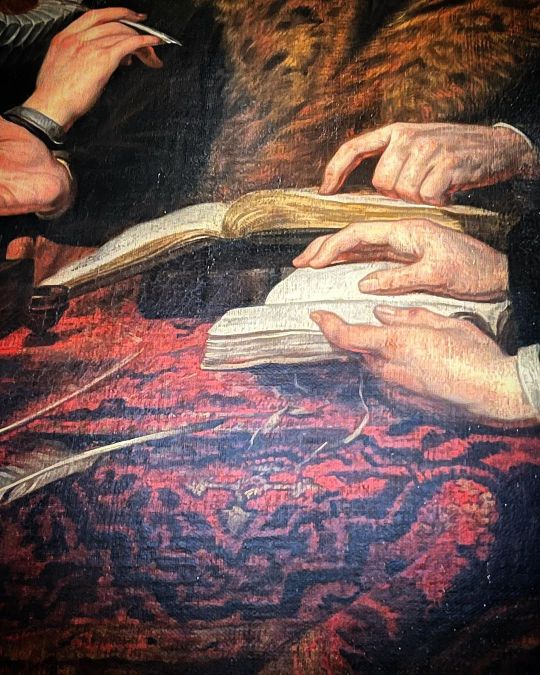
Reading and books in Early Modern European art, Vol. III Courtesy: @plantinmoretus , Antwerp #readersgonnaread #readinginspiration #readreadread #readingart #arthistory #artmuseum #europeanart #earlymodern #artgram #booksandart #readinginart #readersofinstagram #bookstagram #bookcore #booklover #bookblogger #bookart #bookaesthetic #antwerpen #belgium #plantinmoretusmuseum #antwerpart #belgie (at Museum Plantin-Moretus) https://www.instagram.com/p/CqFqXcYLUOe/?igshid=NGJjMDIxMWI=
#readersgonnaread#readinginspiration#readreadread#readingart#arthistory#artmuseum#europeanart#earlymodern#artgram#booksandart#readinginart#readersofinstagram#bookstagram#bookcore#booklover#bookblogger#bookart#bookaesthetic#antwerpen#belgium#plantinmoretusmuseum#antwerpart#belgie
0 notes
Photo

We are drawn to this c. 1920 “Reclining Nude” by the little-known, early American modernist painter John Covert. The geometry of the work, especially the overly long upper arm, makes this more than your usual nude. Not ours. #johncovert #modernism #americanartist #interiordesign #recliningnude #figurativeart #paintingoftheday #nudeart #earlymodernism https://www.instagram.com/p/CfXfMTJrA2d/?igshid=NGJjMDIxMWI=
#johncovert#modernism#americanartist#interiordesign#recliningnude#figurativeart#paintingoftheday#nudeart#earlymodernism
1 note
·
View note
Text
The Inquisitors’ records mention no women in connection with pharmacies. This, however, may be misleading, a reflection of the fact that their moles were instructed to trace information leaks deriving above all from inside the government, and therefore from male patricians. In the patriciate, public social mixity was largely barred to women and, on the whole, elite women confined themselves to the privacy of the home or the convent. They of course needed the services of apothecaries, who sold cosmetics as well as medicines, but it is likely that they made their purchases by means of servants. Further down the social scale, however, a greater degree of gender interaction may have been possible. Were the servants sent to collect medicines for their mistresses always male? And as far as the apothecaries themselves are concerned, we do know that in Venice – unlike, say, in Rome – women were allowed to practise the trade; in 1569, five out of eighty-five registered apothecaries were female.
“Pharmacies as centres of communication in earlymodern Venice,” Filippo de Vivo, Renaissance Studies 21, 2007
#history#early modern period#early modern italy#venice#15th century#16th century#history of medicine#women in history#early modern venice#the venetians
9 notes
·
View notes
Text
Day 35.
Today is mostly just me making rough mock-ups that hold my finger in certain ways. So far I'm confirming my suspicion that fully extending the pinky puts tension on my ring finger which then makes my bow grip "dead". What seems to take the tension off is curling my pinky in and having the top of the distal phalanx support an extension that connects it with the bow. That feels so different--my whole hand feels lighter even though I've now got this thing made of cardboard and tape hanging off my pinky, LOL. The trouble is in getting that support to stay where it's supposed to be on the top of the bow, without attaching it to the bow itself.
I'm also thinking I may have to ditch the all-silicone idea, just because this thing is going to require some stiffness in its core. But that just ups the complexity of this whole project... there's going to be a lot to think about here in terms of possible materials. And yes, if you were wondering, I have had the thought that it would be really cool if I can earlymodern-ify it for the *~aesthetic~* but we are not at that stage yet.
1 note
·
View note
Text
of non-Christians and of colonial settlers as well. Christian beliefs, as
practised by Japanese converts, may well throw further light on the
limits of acculturation. The comparative case study of Japan could well
lead to more plausible identification of native Amerindian customs
than a narrow contextual assumption based only on French source
material.
Another consideration is possible from the comparative view of culture. A thorough analysis of the Japanese case could well shed light on
the apparent cultural biases both in the Jesuit missionaries’ approaches
to non-Christian peoples and in their observations of foreign societies
in general. This identification of the missionaries’ Euro-Christian biases
may also shed light on ideologically-determined French misperceptions
that have been accepted unconditionally as accurate interpretations by
historians of New France.
The influence of the Japanese experience on the French Jesuits is
most clearly seen in missionary approaches to the native peoples. The
missionary methods can be seen as encompassing the following five
aspects: interpreting local cultures; winning converts; the education of
proselytes; the indigenous practice of Christianity; and, more generally, the establishment of the missionary church. A comparison of the
two regional approaches may reveal both similarities and differences.
Although external conditions in the two cases have resulted in differing
manifestations, such superficial differences could sometimes be seen as
concealing fundamental similarities in evangelistic methodology.
There were three kinds of approaches used by missionaries in order
to achieve success. First, they interpreted non-Christian cultures; second, they preached, won converts and then educated them; and third,
they established indigenous Christian communities. In the chapters
that follow chapter one, which is the review of literature on the Jesuit
missions, an attempt will be made to analyse each of these methods
and approaches in turn.
To begin with, chapter two will focus on the importance which the
Iberian and French missionaries attached to interpreting non-Christian
cultures in order to make their preaching more effective. The missionaries encountered a deep gulf between Christian and non-Christian
cultures. From a contemporary sixteenth- or seventeenth-century
standpoint, Jesuit priests were masters of Euro-Christian knowledge.
Therefore, they were capable of understanding non-Christian cultures
at least in their own systematic way. Within the confines of earlymodern western intellectuals, their analysis, while biased, was the best
0 notes
Text
#earlymodern shax-posting #shakespeare
Reblog if you know Marlowe is underrated
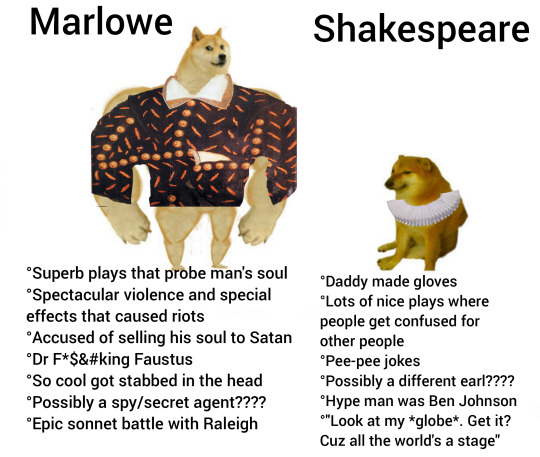
0 notes
Text

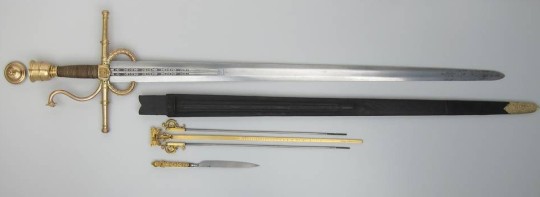
A Riding Sword with quillons designed as functional miniature cannons, commissioned from Christoph Dreßler by Sophia von Brandenburg for her son Johann Georg, Elector of Saxony,
OaL: 39.7 in/100.8 cm
Blade Length: 32.1 in/82.4 cm
Weight: 3 lba/1365 g
Dresden, Germany, 1615, housed at the Staatliche Kunstsammlungen, Dresden.
2K notes
·
View notes
Photo

Sliced, stabbed, punctured, bleeding, harassed on all sides by various weaponry, the curious image of Wound Man is a rare yet intriguing presence in the world of medieval and early modern medical manuscripts. In his essay "The Many Lives of the Medieval Wound Man", Jack Hartnell explores this enigmatic figure’s journey through the centuries — click link in bio and search "wound man".⠀ . .⠀ 🤕🤕🤕🤕🤕🤕🤕🤕🤕 . . #woundman #weaponry #injury #medieval #renaissance #earlymodern #art https://www.instagram.com/p/B7odipkpHs6/?igshid=ybsrxekg8t7u
61 notes
·
View notes
Photo

#LuceTuEscritura #Pilot #iroshizuku #amairo #天色 #Jherbin #BleuOcean #penaddict #journaling #escribirtinterías #filofrikis #EarlyModern #writtenword #shelter https://www.instagram.com/p/CEr4ULkpLbB/?igshid=1tzfjsrt1r3oq
#lucetuescritura#pilot#iroshizuku#amairo#天色#jherbin#bleuocean#penaddict#journaling#escribirtinterías#filofrikis#earlymodern#writtenword#shelter
2 notes
·
View notes
Text
Introduction
The following posts will be centered around a study of the English Early Modern Period, as presented within the 10th edition of the Norton Anthology of English Literature, The 16th Century and Early 17th Century.
It will be what strikes me as interesting, thought-provoking, and include ideas that relate to the readings from present culture, or other non-early modern readings.
2 notes
·
View notes
Photo
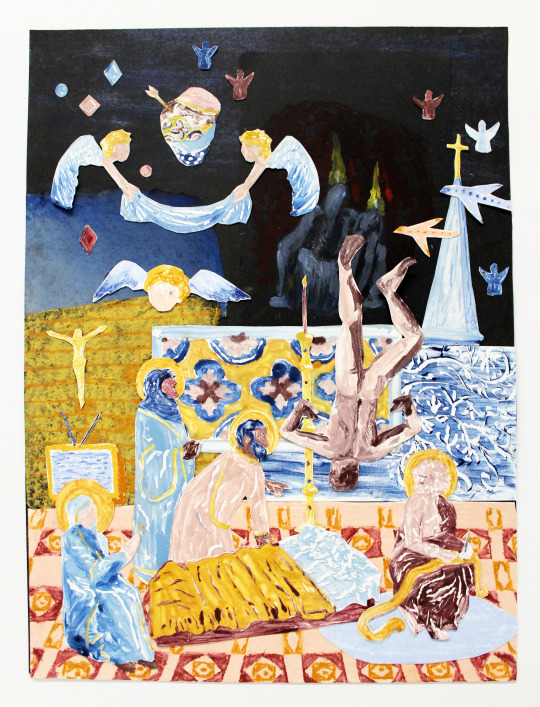
“At the bottom of everything there is the hallelujah.” –Clarice Lispector, Água Viva
#art#collage#monoprint#painting#oilpaint#paint#oilpainting#medieval#earlymodern#gay#religion#christianity#ornament#design#pattern#drawing
5 notes
·
View notes
Photo
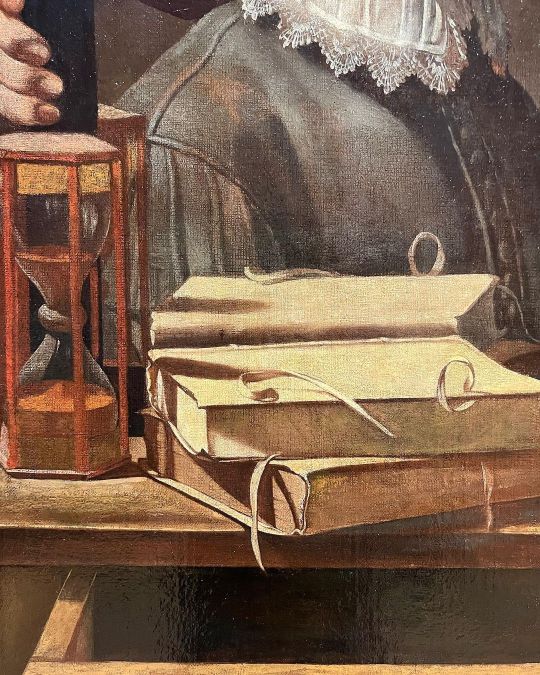
Reading and books in Early Modern European art, Vol. II Courtesy: @kmska_museum #readersgonnaread #readinginspiration #readreadread #readingart #arthistory #artmuseum #europeanart #earlymodern #artgram #booksandart #readinginart #womenreading #womenwhoread #readersofinstagram #bookstagram #bookcore #booklover #bookblogger #bookart #bookaesthetic #antwerpen #belgium #kmska (at Koninklijk Museum voor Schone Kunsten Antwerpen) https://www.instagram.com/p/Cp-msUyrzJT/?igshid=NGJjMDIxMWI=
#readersgonnaread#readinginspiration#readreadread#readingart#arthistory#artmuseum#europeanart#earlymodern#artgram#booksandart#readinginart#womenreading#womenwhoread#readersofinstagram#bookstagram#bookcore#booklover#bookblogger#bookart#bookaesthetic#antwerpen#belgium#kmska
0 notes
Photo

Robert Kirk, The Secret Commonwealth of Elves, Fauns, and Fairies, Introduction by Marina Warner (New York: New York Review Books, 2007).
https://www.ebay.com/itm/254316713601
#fairies#elves#fauns#folklore#mythology#robertkirk#scotland#scottish highlands#17thcentury#earlymodern
11 notes
·
View notes
Photo

Be sure to follow good friend, art historian, and newly minted PhD @stephenieeloise for some fab images and info coming up to All Souls Con! #Repost @stephenieeloise ・・・ Spent hours in the #Glasgow Uni Special Collections looking at #alchemical #manuscripts. And boy did I fall in love with them all. So many fascinating images and details. No misbehaving manuscripts, though I might’ve audibly gasped a couple times. You just never know what you’re going to see in some of these. @allsoulscon will hear about some of these beauties. Manuscripts all from the Ferguson collection, nos. 230 (first three) and 6 (if I played favourites...). Ferguson 6 is quite fragile, which is terrifying when folios start moving! But also allows for a glimpse at bindings you wouldn’t normally see. @allsoulspod #Sol #Luna #Sun #Moon #Illustrations #Alchemy #Libraries #SpecialCollections #Dragon #Ouroboros #king #queen #jousting #bindings #details #folio #medieval #earlymodern
#ouroboros#alchemy#luna#glasgow#libraries#alchemical#repost#queen#details#bindings#jousting#illustrations#sol#moon#medieval#dragon#manuscripts#sun#folio#earlymodern#specialcollections#king
12 notes
·
View notes